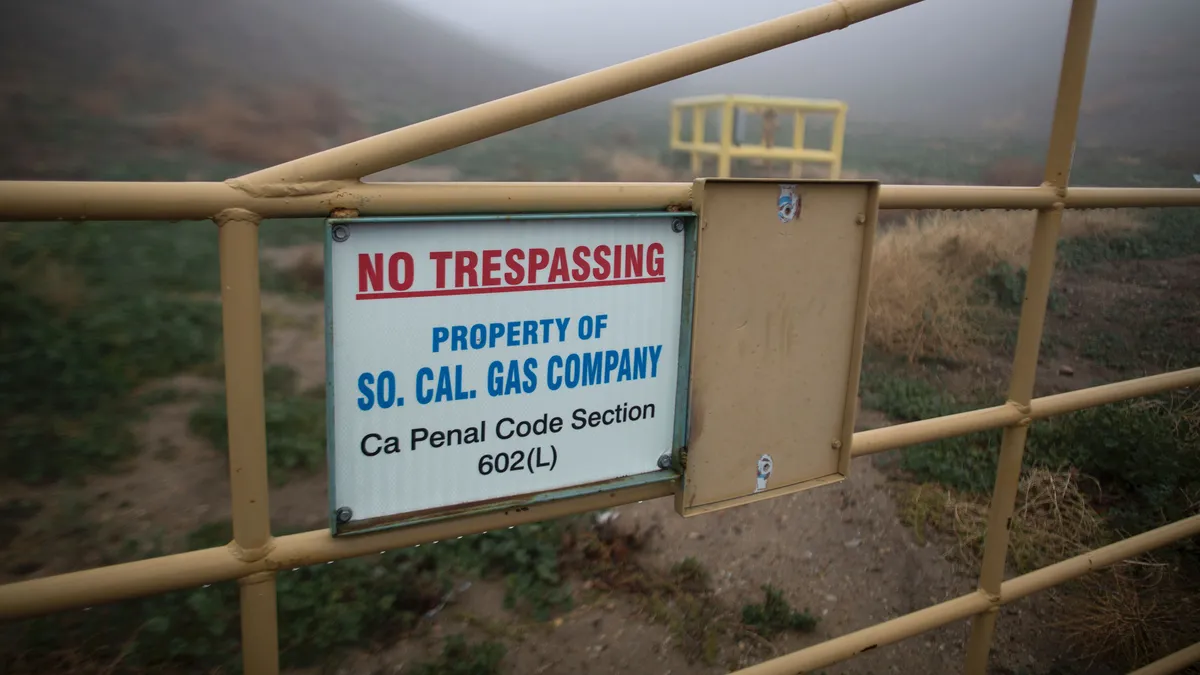Dive Brief:
- A new study completed at the request of Los Angeles County has concluded the Southern California Gas Aliso Canyon gas storage facility is not needed to maintain electric reliability, and that state regulators have issued confusing and incomplete guidance on the issue.
- In 2015, a leak at the facility was discovered, forcing the evacuation of nearly 6,000 residents and leading to emergency orders to help maintain power reliability in the region. In January, state regulators said the facility could reopen at roughly a third of its original size.
- The Los Angeles Times reports hearings kick off April 23 to consider reopening of the facility. Previous hearings were met with protests, including one that was shut down due to demonstrations.
Dive Insight:
A new report prepared for Los Angeles County by Kirkland, Wash.-based EES Consulting finds California's electric reliability can be maintained without the Aliso Canyon storage facility. And it casts doubt on the information that has been made publicly available about the need for the facility.
The California Public Utilities Commission and other agencies generated data that “fail to provide the public with a complete picture of … the need for withdrawals from Aliso Canyon," the report says, according to the Times.
The analysis comes to light as state regulators prepare to begin hearing testimony on the facility's future. Owner SoCal Gas has said the storage facility is still needed in times of extreme weather.
The loss of Aliso Canyon had a significant impact on California's energy mix. The U.S. Energy Information Administration estimated gas generation was off about 20% during June, July and August of last year but was replaced largely by carbon-free sources and power imports. The state has rushed out battery storage projects to avoid energy shortages.
All this has led to arguments that the facility is unnecessary.
“There is sufficient time to aggressively implement demand-side mitigation measures that will eliminate the need to withdraw gas from Aliso Canyon during the next winter season,” the Los Angeles Daily News reported, citing researchers.
In January, California regulators began considering allowing the facility to resume operations more than a year after operators discovered the leak. Among proposed restrictions, the CPUC could limit the pipes that SoCal Gas could use to inject gas and limit the facility to a maximum 29 billion cubic feet (Bcf). The facility has a capacity of 83 Bcf.















